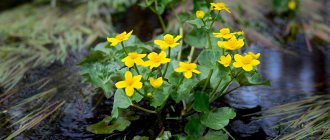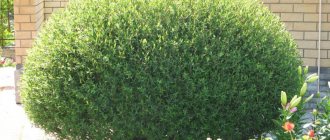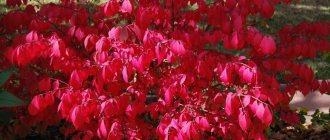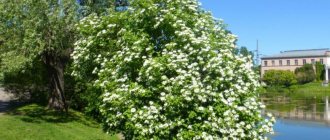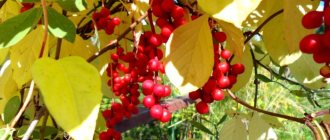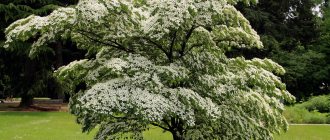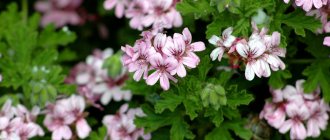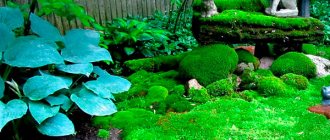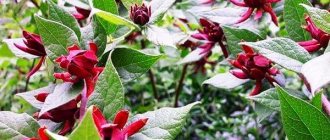Author: Elena N. https://floristics.info/ru/index.php?option=com_contact&view=contact&id=19 Category: Fruit and berry plants Published: June 26, 2017Last edits: November 02, 2020
- Growing conditions
- Medicinal properties
Schisandra (lat. Schisandra) is a genus of evergreen and deciduous plants of the Schisandra family, of which, according to various sources, there are from 14 to 23 species. However, only Chinese lemongrass (Schisandra chinensis), or lemon tree, or medicinal lemongrass, which grows naturally in China, Korea, Japan, Sakhalin, the Amur Region, the Khabarovsk and Primorsky Territories of Russia and the Kuril Islands, is grown in cultivation. Today this wild vine is grown as a fruit tree.
Planting and caring for lemongrass
- Flowering: up to two weeks in May and June.
- Planting: in October or late April-early May.
- Lighting: bright light, but rooting seedlings need to be shaded from direct rays.
- Soil: drained, nutritious, moderately moist.
- Watering: moderate, in hot weather – abundant, consumption – up to 6 buckets of water per adult bush.
- Air humidity: in hot weather and drought, it is recommended to spray the shrub with warm water in the evening.
- Top dressing: from the third year after planting in the ground in April, saltpeter is added to the tree trunk circle, and in the summer, once every 2-3 weeks, a solution of fermented mullein or chicken droppings is applied. In autumn, wood ash and superphosphate are incorporated into the soil around the tree trunk.
- Garter: the plant is grown on a trellis or tied to ladders installed at an angle to the wall of the building.
- Pruning: from the third year after leaf fall, but if necessary, can be pruned in July.
- Reproduction: seeds, cuttings, root suckers and layering.
- Pests: do not affect.
- Diseases: fusarium, leaf spot, phyllostictosis, ascochyta blight, ramularia and powdery mildew.
- Properties: the plant contains biologically active substances that have a tonic and stimulating effect.
Read more about growing lemongrass below.
Chemical composition of the plant
In terms of its chemical composition, Chinese lemongrass is a very useful plant. It contains many vitamins and minerals beneficial to the human body.
This type contains the following substances:
- vitamin C - slows down aging, increases and strengthens the immune system;
- B1 - strengthens nerves, helps normalize intestines, improves skin condition;
- PP - lowers cholesterol in the blood, normalizes blood pressure;
- E - improves the condition of the skin, fights its aging;
- beta-carotene - prevents the formation of malignant tumors, normalizes the functioning of the heart muscle.
In addition to these components, the plant contains many elements, such as:
- zinc;
- iodine;
- manganese;
- potassium;
- iron;
- copper.
Botanical description
The herb Schisandra is a deciduous vine 10-15 m long with a stem curling along the support, about 2 cm in diameter, covered with dark brown flaky bark. The bark on the shoots of the plant is smooth and yellowish. Schisandra leaves are up to 10 cm long and up to 5 cm wide, dense, with a pointed apex and wedge-shaped base, unclearly toothed along the edges, glabrous and dark green above and pale, slightly pubescent along the veins on the underside, located on pinkish-red petioles 2-2 long. 3 cm. Both stems and leaves emit a lemon aroma. Schisandra flowers are up to 1.5 cm in diameter, dioecious, with the same distinct aroma, white from the beginning of flowering, but gradually turning pink, located on drooping stalks in the leaf axils. Schisandra fruits are clustered racemes of many berries (multifoliates) up to 10 cm long, consisting of juicy red berries in which schisandra seeds ripen.
Flowering begins in May or June and lasts 10-14 days. Schisandra berries ripen in September. The berries are used to make jelly and jams, prepare soft drinks, and in the confectionery industry they are used to make fillings for sweets. The juice of the plant is used for bouquets of wines; tea is brewed from the bark and leaves of the plant. Schisandra fruits are medicinal raw materials.
Interesting Facts
- Schisandra is often used for decorative purposes. It makes excellent hedges that can decorate a gazebo.
- Due to the fact that vines form a dense layer of leaves, lemongrass is often used as a natural barrier to frosty winds.
- The fruits combine a whole kaleidoscope of flavors. Gourmets distinguish not only sour and sweet, but also balsamic flavor.
- The berry is used in cooking to prepare sauces for various dishes.
- In China, a decoction of lemongrass has long been used to relieve headaches.
We examined in detail the features of lemongrass, learning a lot of interesting things about it. First of all, the plant is a medicinal plant, playing the role of a powerful tonic. At the same time, it can become an interesting decorative element for your local area. And despite the fact that lemongrass is quite difficult to plant and grow, the benefits of its fruits will more than pay off all the efforts.
In this form, an experienced gardener talks about the use of lemongrass.
Planting lemongrass in open ground
When to plant
In areas with a warm climate, the lemongrass flower is planted in open ground in October, and in the middle zone it is better to do this in the spring, at the end of April or beginning of May. For lemongrass, choose a well-lit area, protected from the cold wind. It is recommended to plant at least three plants at a distance of about 1 m from each other. If you plant lemongrass near a building, step back 1.5 m from the wall so that water from the roof does not flow onto the roots of the plant.
- Planting lilies
How to plant
Planting holes are dug with a depth of about 40 and a diameter of 50 to 70 cm. A layer of drainage material (crushed stone or broken brick) at least 10 cm thick is placed on the bottom, then the hole is filled with a mixture of sheet compost, turf soil and humus in equal parts with the addition of 500 g wood ash and 200 g superphosphate. Planting of lemongrass begins in two weeks, when the soil in the hole has settled and compacted.
The best planting material is lemongrass seedlings aged 2-3 years. With a height of 10-15 cm, they have a well-developed root system that quickly adapts to a new location. Place the seedling in the hole so that the root collar is at surface level after planting. Compact the soil around the seedling and water the tree trunk generously. To prevent water from spreading, make a 10 cm high earthen roll along the edge of the tree trunk circle. When the water is absorbed, mulch the soil around the seedling with humus.
Schisandra blooms, but does not bear fruit. Capricious liana. Why doesn't lemongrass bear fruit?
Wrong gender?
Do you think there are only two genders - male and female? Plants also have other options. So, lemongrass is divided into four different groups.
"Men". They are firmly determined with their sexual orientation from the moment of the first flowering and do not change it throughout their lives. They don't produce fruit.
"Women". Only female flowers form and then berries (if lemongrass with male flowers grows nearby).
Plants with alternating sexes: the same vine (perhaps depending on the mood?) produces only male flowers one year, only female flowers the next, and so on. The harvest is unpredictable.
Monoecious vines, which in their youth can feel like “men” and bloom only with male flowers, but in subsequent seasons form male and female flowers. They are able to bear fruit alone and deserve special attention from summer residents. This valuable group includes the Pervenets and Debut varieties, selected in the Moscow region from Far Eastern seeds.
Dense shadow?
In order for lemongrass to bear fruit, it needs to receive direct sunlight for at least half the day. If it is planted in dense shade, then there will be no fruit until the vine reaches the light.
Photo: From personal archive/Natalia Kozak
Didn't you watch the density?
Schisandra produces a lot of shoots. If it is allowed to do this without restrictions, it will expand indefinitely, remaining stunted, and there will be little fruit. Therefore, all excess annual offspring must be removed. Schisandra fruits best if it is formed on a support of 2-3 stems and grows upward, not outward.
Shoots - for planting
Excess shoots can be planted in a new place. True, in this case it must be separated from the mother plant before buds open or after leaf fall. The shoots dug up with leaves suffer greatly after transplantation and may die even if there are high-quality roots.
Bad spring?
Schisandra flowers are pollinated not by bees, but by small pollen-eating beetles. In cold or rainy weather, they may not be able to cope with their duties.
4 reasons to grow lemongrass
- This is a picturesque winter-hardy vine that will decorate a hedge, gazebo, trellis or pergola.
- It produces fruits with an unusual taste, which simultaneously contains sour, sweet, spicy, acrid, balsamic and even salty notes. But those who once tasted lemongrass will love it all their lives.
- Fruits or tea with lemongrass leaves invigorate and improve your mood.
- It is easy to care for.
Caring for lemongrass in the garden
Growing conditions
Schisandra seedlings take root easily, but at first they need to be protected from direct sunlight. Caring for them consists of watering, shallow loosening of the soil in the tree trunk circle, weeding and spraying the leaves with water in dry times. An adult lemongrass is also sprayed and watered in dry weather, using up to 6 buckets of water heated in the sun for each plant.
They begin to feed lemongrass in the third year after planting: in April, 20-30 g of saltpeter is added to the tree trunk circle, then watered abundantly, and after the water is absorbed, this area is mulched with leaf compost or humus. In the summer, every 2-3 weeks, lemongrass is fed with a solution of fermented mullein (1:10) or chicken manure (1:20). And in the fall, 100 g of wood ash and 20 g of superphosphate are added to each bush, which are embedded to a depth of 10 cm, after which the area is watered.
Supports for lemongrass
Schisandra is grown on a trellis: with this placement, the plant receives more light, which helps to increase the size of the berries. Schisandra growing without support looks like a small bush and rarely bears fruit. The trellis is installed in the year the seedlings are planted. To make it, you will need pillars, which, after digging to a depth of 60 cm, should rise above the site by 2-2.5 m. They are located at a distance of 3 m from each other. Wire is pulled onto the poles in three rows: the first - at a height of 50 cm from the ground, and the next ones every 70-100 cm. Young plants are first tied to the bottom wire, and as their shoots grow - to those located above.
To support the lemongrass planted near the building, inclined ladders are used as supports.
Trimming
They begin to prune lemongrass in the second or third year after planting, when the increased growth of roots stops and the rapid development of ground organs begins. From 3 to 6 of the growing shoots are left, the rest are cut off at soil level. This is done in the fall, after the leaves have fallen, but if the vine is very thick, then pruning can be done in June-July. You cannot prune lemongrass in spring or winter, because at this time juices are actively fermenting in it, and the plant may die from desiccation.
During sanitary pruning, small, dried, broken, thickening branches affected by pests or diseases are removed and side shoots that are too long are shortened, leaving no more than 10-12 buds on them. The fight against root growth can be carried out throughout the season.
In order to rejuvenate Schisandra, branches that are 15-18 years old are gradually cut out, replacing them with young basal shoots.
Transfer
Schisandra does not tolerate transplantation very well, suffering from even slight drying of the roots. This is why experienced gardeners do not propagate the plant by division. If you really really need to replant the lemongrass, carefully prepare for the procedure: dig a hole, prepare a sufficient amount of soil mixture to fill it, and only after that start digging out the lemongrass.
Reproduction of lemongrass
Schisandra is propagated by seed, cuttings, rhizome suckers and layering.
When propagating by seed, it is best to sow freshly picked fruits before winter. In the spring, seeds freed from seedlings and stratified for two months are sown to a depth of 5 mm in boxes with seedling substrate. The crops are covered with paper and watered daily. Shoots appear in 1-2 weeks. They need to be protected from direct sunlight and watered once or twice with a pale pink solution of potassium permanganate. At the stage of development of 3-4 leaves, the seedlings are transplanted into large boxes with a step of 5 cm, and at the beginning of summer, after two weeks of hardening procedures, they are planted in open ground, in partial shade, keeping a distance of at least 10 cm between the seedlings. For the winter, the bushes are covered with spruce branches or leaves. Schisandra from seeds are transplanted to a permanent place at the age of 2-3 years.
For cuttings, use the tops of young shoots, which are cut off in early July. The lower sections of the cuttings are immersed in a solution of Kornevin or Heteroauxin for 24 hours, after which they are planted in damp sand under a film or glass cap.
- How to plant fruit trees: prepare the foundation pit correctly
Strong annual shoots of root shoots are used as layering. In April, before the start of sap flow, they are bent down, laid on loose soil, fixed in this position and covered with a 10-15 cm thick layer of soil mixed with peat or humus. The top of the layering is fixed on a trellis. In the 4-5th month, the cuttings grow roots, and within 2-3 years an independent root system is formed, after which the cuttings are separated and planted in a permanent place.
To propagate Schisandra by root suckers, at the end of April or beginning of May, you need to dig up 2-4 suckers growing nearby, but as far as possible from the adult plant, and immediately transplant them to a previously prepared place. This must be done quickly, since the roots of the shoots cannot tolerate even short-term drying. Within a month, you need to water the planted shoots abundantly, protecting them from direct sunlight.
Pests and diseases
Pests do not parasitize on lemongrass: apparently, it repels them with its smell. The plant is also resistant to diseases, but from time to time some diseases still affect it.
Leaf spotting is manifested by the formation of brown blurry spots with black dots on the pycnidia on the underside of the leaves. The difficulty is that the disease can be of either a fungal or bacterial nature. The infection is destroyed by treating the plant with copper-containing preparations.
Phyllosticosis of leaves is diagnosed by large, almost black spots with a purple border. Sometimes the affected tissue in the center of the spots falls out, leaving holes in its place. Old leaves usually suffer from the disease. Measures to combat phyllosticosis are the same as for spotting.
Ascochytaosis looks like brown spots up to 20 mm in size with clearly defined zones. The pathogens of the disease are destroyed by treating the plant with one percent Bordeaux mixture.
Ramulariasis is a fungal disease, the signs of which are round or angular single brown spots with a lighter center in which a pink coating forms. The fungus is destroyed with fungicidal preparations.
Powdery mildew is a fungal disease well known to all gardeners, the symptom of which is a loose whitish coating on the leaves and stems of the plant. Over time, the plaque turns brown and becomes dense. In the fight against powdery mildew, schisandra is treated with soda ash, but if the damage is severe, then copper-containing preparations will have to be used.
Fusarium affects Schisandra during the seedling period: a dark ring appears in the lower part of the stem of the seedling - a constriction. As the disease develops, the stem in this place softens and the seedling dies. It is better to remove diseased specimens immediately, after which the soil in the container is spilled with a weak solution of potassium permanganate.
Schisandra in the Moscow region
Chinese lemongrass feels excellent in the Moscow region. Actually, both lemongrass in the Urals and lemongrass in Siberia are no longer uncommon today, since this plant is not afraid of cold, especially under a snowdrift. Only young plants will have to be protected from frost: they are covered with a layer of leaves 10-15 cm thick, and sprinkled with spruce branches on top, which repel rodents. Adult plants overwinter normally without shelter.
How to feed lemon?
Lemon can bloom and bear fruit in the 2-3rd year. Caring for indoor lemon is:
- timely watering;
- regular spraying;
- competent feeding.
Once a month, after watering, add a dose of nitrogen fertilizer dissolved in water (urea or ammonium nitrate - 2 g per 1 liter of water) into the soil. This is especially true for soil poor in organic matter. Nitrogen gives strength to plants; during spring and summer, a powerful leaf apparatus is formed, with which the tree safely endures all the hardships of winter. You can water with diluted slurry of low concentration (1:30).
Under no circumstances should you fertilize with microelements. Unlike other plants, lemons do not have hairs on their roots. Their role is played by mycorrhizal fungi. They seem to stick to the roots of the lemon, and through them the whole plant is fed. Mycorrhizae themselves feed on organic matter, for example, humus. They decompose it, forming valuable substances, which they first feed on themselves, and then feed the lemon. Trace elements kill mycorrhiza, thus the tree is depleted and will soon die. Excessive nitrogen feeding is not good for lemons. The tree can grow with a powerful crown to the detriment of fruiting.
Starting from the second year, in addition to nitrogen, phosphorus and potassium must be used. Superphosphate can be sprinkled on top of the soil and it will slowly but surely feed the plant. Phosphorus promotes abundant flowering and fruiting. The flowering period of the lemon tree is spring, autumn. Single buds appear throughout the year. Fruiting period: after flowering, a fruit is formed that will grow and gain strength for 9 months. This can happen at any time. After harvesting in the spring, it is necessary to feed with urea (or saltpeter) and superphosphate. If the crop is harvested in the fall, you cannot feed it, since the plant goes dormant and excess nutrition will only weaken it. Postpone fertilizing to February.
Types and varieties of lemongrass
Only one type of lemongrass is grown in cultivation - Chinese, or Far Eastern, of which only two varieties are known:
- Firstborn is a frost-resistant and disease- and pest-resistant lemongrass of medium ripening with cylindrical fruits consisting of carmine-red aromatic fruits with a diameter of up to 7 mm and weighing up to 0.6 g with bright red juicy pulp with a sour taste. The skin of the berries is thin, the juice is easily separated when pressed;
- Garden-1 is a fast-growing, high-yielding vine that produces up to 25 aromatic juicy berries with a sour taste in one fruit.
Methods of application
Schisandra chinensis has a lot of beneficial properties, so its use is justified in folk medicine and recognized in official medicine. The pharmaceutical industry produces the following dosage forms based on Far Eastern Schisandra:
- Pills. This is a combination of extract from the fruits of the liana and the Terra-Plant flavonoid complex, which has mild tonic properties. They are absorbed for better absorption.
- Syrup. In addition to lemongrass, it includes rosehip extract and ascorbic acid. The useful composition will support you during the cold season and help you out when you lose strength.
- Fruit powder. Exported from China. Useful, stimulating decoctions are prepared on its basis or taken in dry form with water.
- Tincture. Consists of Schisandra chinensis seeds and 95% alcohol. Recommended for asthenic syndrome. Due to alcohol, which is quickly absorbed into the blood, you don’t have to wait long for an invigorating effect.
- Fruit. Sold in pharmacies in the form of dried berries. Infusions, decoctions, teas, syrups, and compotes are prepared from them. All of them are saturated with useful substances.
- Oil. Essential oil is classified as cosmetic because it has the ability to moisturize, regenerate and rejuvenate the skin. Schisandra oil is used as a massage oil and is used in aromatherapy.
- Herbal teas. In addition to the Far Eastern vine with a stimulating effect, they also include other medicinal herbs. For example, one of the options is adding rose hips and rhizomes of the tea plant. Each herbal tea is designed to have a specific positive effect on the body. Based on the set of plant materials, the beneficial properties of the plant appear.
How to properly use medicines containing the Far Eastern liana is indicated on the packaging of pharmaceutical preparations. It should be remembered that Far Eastern Schisandra contains potent substances, so before taking them it is useful to get a doctor’s opinion.
Properties of lemongrass - harm and benefit
Medicinal properties
Schisandra fruits contain organic acids (tartaric, malic and citric), sugars, coloring and tonic substances, vitamins C and E. The seeds of the plant contain fatty oil, and the leaves contain macro- and microelements calcium, magnesium, manganese, copper , iron, zinc, cobalt, iodine and aluminum. But the most valuable substances contained in Schisandra are the biologically active schisandrin and schisandrol, which improve liver function and stimulate the cardiovascular and nervous systems. The daily dose of these substances required by the body is contained in 50 g of lemongrass berry pulp.
Growing Schisandra chinensis - planting and care
Back in the 5th century AD. The refreshing and tonic properties of Chinese lemongrass were known, so hunters in the Far East took its dried berries with them on the road. And today, the beneficial properties of lemongrass have their use as a stimulating and adaptogenic agent for physical and mental fatigue, asthenic and depressive syndromes.
In Chinese medicine, the fruits and seeds of Schisandra are used to strengthen the heart muscle, for nephritis, hypertension, cardiac neurosis, anemia, pulmonary tuberculosis, sexual weakness, liver diseases, and a decoction of the berries is used to lower blood sugar and stimulate tissue respiration.
- Wintering plants in the basement - what conditions need to be created and will all plants survive the winter like this?
Schisandra tincture is used to prevent influenza and acute respiratory infections; it reduces the glycogen content in the liver, but increases its amount in the muscles. The tincture is prepared as follows:
- Pour 10 g of crushed seeds and 20 g of berries into 100 ml of seventy percent alcohol, seal tightly, leave in a cool, dark place for 10 days, then strain and take 25-30 drops on an empty stomach.
Schisandra is also used in the cosmetics industry: it is part of tonic face masks.
Contraindications
Neither Schisandra nor its preparations have virtually any contraindications. It is not recommended to abuse lemongrass for people with high blood pressure, high acidity of gastric juice, easily excitable or suffering from insomnia. Pregnant and breastfeeding women should consult their doctor about the use of lemongrass or its preparations.
Contraindications
There are cases when lemongrass cannot be used in any form. Avoid using the product if the following pathological processes develop:
- in cases of arterial hypertension development;
- with increased excitability;
- with vegetative-vascular dystonia;
- with the development of increased intracranial pressure;
- for allergic reactions;
- when arachnoiditis appears;
- with epileptic manifestations;
- for problems with sleep;
- in a state of pregnancy;
- in case of acute infectious disease.
He also recommends not eating lemongrass berries if a person develops kidney or liver pathologies. This will lead to aggravation of the condition. It is better to consult a doctor if various pathological processes develop.
